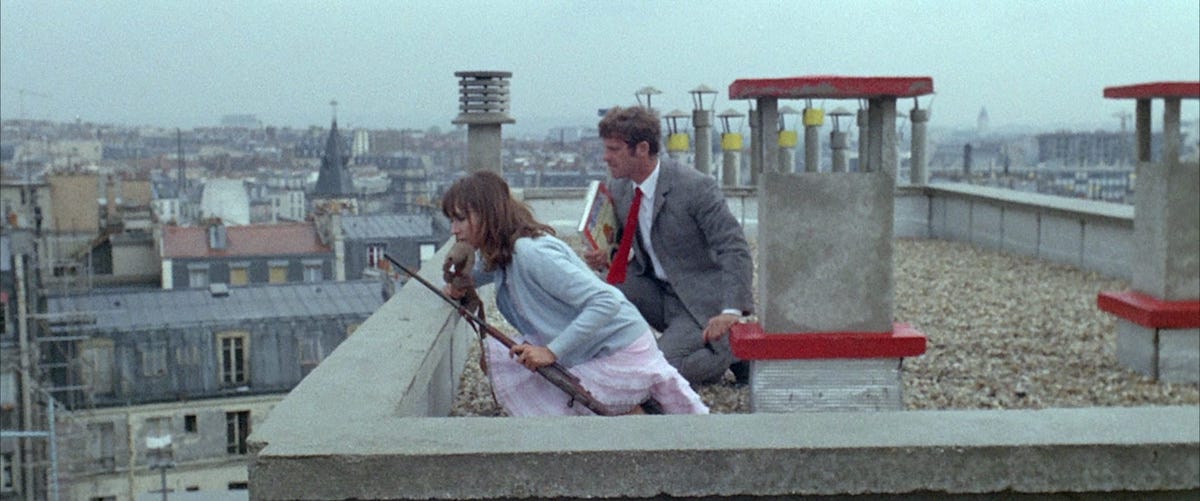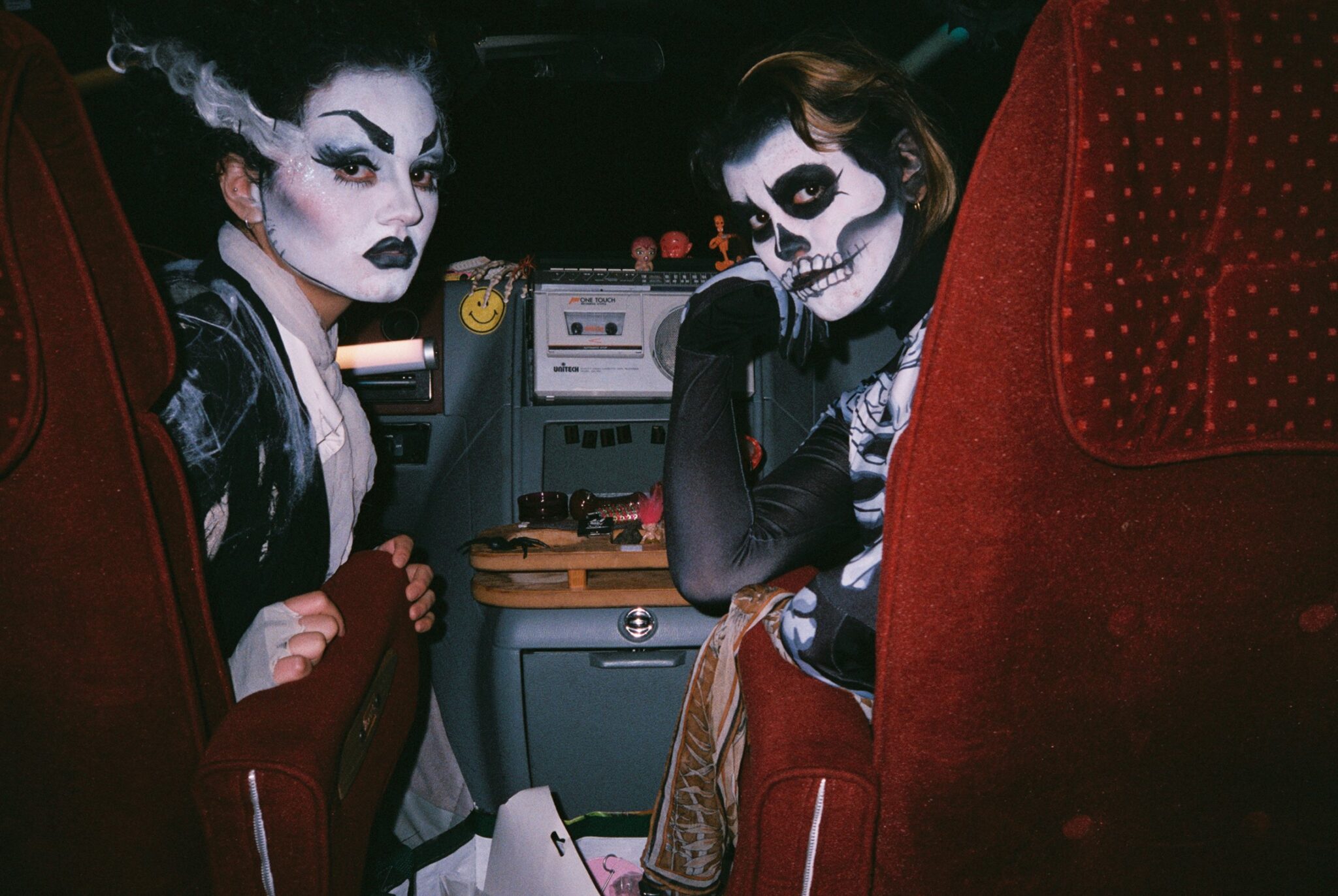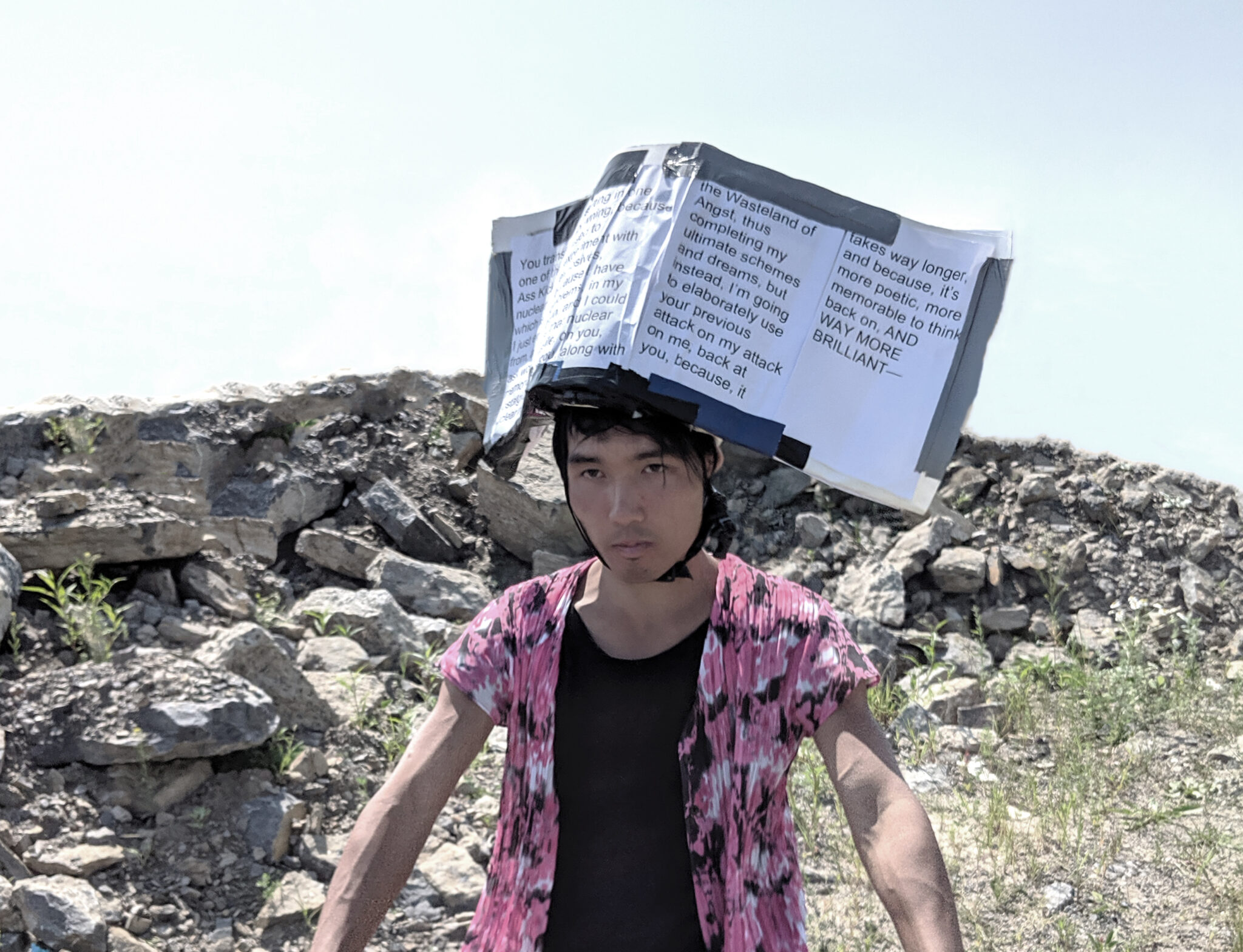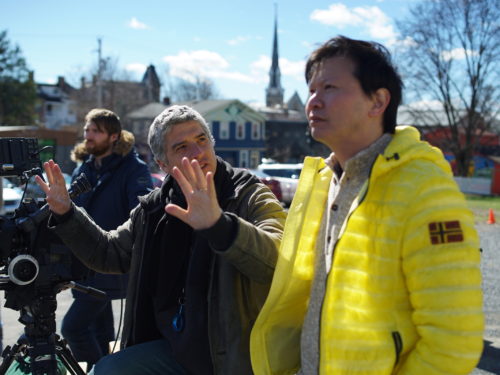We lost a titan this year. Michael Roberson pays tribute by looking back at one of the greatest triumphs from Godard’s French New Wave period
Jean-Luc Godard passed away in September of this year after 91 years of living and 67 years of filmmaking. His creative and inspired innovations gave us new perspectives on the medium by shaking the foundations of film form through a lens of philosophy, politics, art, and an unbridled love of cinema. Pierrot Le Fou (1965) gives us a glimpse into the Pop Art style and substance of his French New Wave output while highlighting his love/hate relationship with the commercialized popular culture of that time. Godard’s Pierrot still feels ahead of its time today — both in its form and content — and encapsulates the work of an iconoclast whose films continue to shape the cinematic landscape.
In Pierrot le Fou, the narrative is necessarily simple and well-traveled, classic even: a man, unfulfilled by his bourgeois life, runs away with a free-spirited woman, only to be double-crossed and left to his inevitable fate. “A story,” she narrates. “All mixed up,” he adds. They commit a crime and hit the road, out on the lam. “Leave in a hurry,” she says in voiceover. “Wake from a bad dream,” he adds. Here, Godard dips his toes into the Left Bank, giving us pages from a Nouveau Roman, wrapping us in the inflections of Duras and Robbe-Grillet, the fractured narrative of a Resnais film. By and large, Pierrot’s plot hardly reinvents the wheel. Yet, the deviation from tradition comes not in the story itself but in how the story is told.
The film introduces us to Ferdinand (Jean-Paul Belmondo), a restless, unhappily married man unmoored by his bourgeois life. In his search for fulfillment, he attends a party with his wife and friends where, in place of genuine conversation, he’s met only by mindless repetition of marketing copy for cars and beauty products. The party scene is broken into monochromatically lit vignettes of red, green, yellow, and blue. In the green scene, Ferdinand encounters American filmmaker Samuel Fuller, who is in Paris to film an adaption of Baudelaire’s The Flowers of Evil. Fuller describes cinema to Ferdinand as a battleground of emotions. Overwhelmed by a sense of disconnection and loneliness, Ferdinand leaves the party in his friend Frank’s American car and runs away with Frank’s niece Marianne Renoir (Anna Karina) — who happens to be the babysitter and his former lover — lights whizzing past, reflected in the car, the same bold hues as those lighting the party.
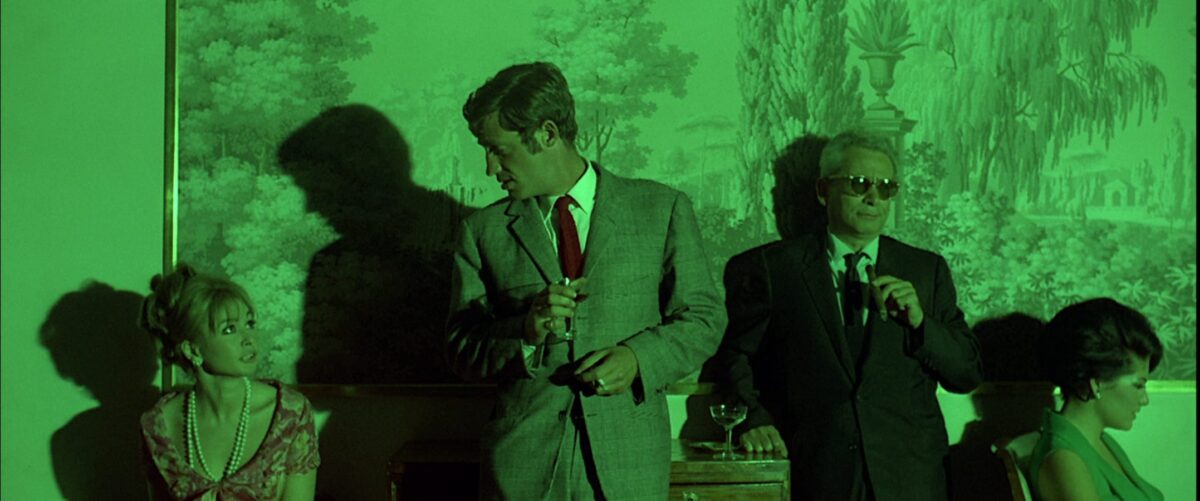
A larger narrative is born from this, the very form by which the aforementioned narrative is told. That is, the seemingly anarchic barrage of quote-laden, pop-fueled style, housed atop the genre backbone of a traditional story, reinvents the cinematic narrative as a postmodern critique/celebration of the auteur’s and, in turn, the audience’s experience up to and within that point in time. Godard’s temporal-spatial experience reflects a globalized, cultured world’s experience through the form, which is structured not only upon the foundation of genre but also upon the foundation of collective, popular thought.
A river of associative thought flows endlessly through the conscious mind: A storefront may remind you of one of your favorite television shows; A song can trigger memories of a film from childhood; A stranger’s face might resemble a fondly remembered comic book hero. These things become a part of us; they form the language of thought. The music, movies, books, and artwork we experience are all absorbed into the structure of our thinking; they form the basis of our understanding of the world. In Pierrot, Godard has recognized and made use of this understanding. He embodies the postmodern dissatisfaction with narrative and embraces the idea that everything has been done before. He pushes forth and crafts a narrative from the frustration over nothing being new. Godard lays it as a groundwork for further exploration not of romance and relationships but of consciousness in a media-saturated age.
Take, for example, the scene at the gas station, the day after Ferdinand and Marianne run away together. After spending the night at a gun-runner’s apartment where they kill two men, including Frank, they make their escape. At face value, we see an outlaw couple on the getaway stopping for gas and battling the “henchman” attendants at the station. But this narrative functions merely as a vessel. The scene begins as they pull up to the station and Ferdinand says to the attendant, “Put a tiger in my tank.” This was the popular advertising campaign for Esso oil at the time, yet we’ll come to find out that this is a Total gas station, Esso’s French competition. The attendant wittily replies, “We don’t sell tigers.” Here already, the scene soaks up mass culture like a sponge, both in the minds of the characters and in the reflexivity of Godard’s writing. Eschewing a simple “fill ’er up,” for example, the characters function on a wave of cultural slogans. In modernity, we are constantly subjected to messages from mass media, and they seem to slip into our bloodstream and structure our thoughts. This is exemplified in the interaction here and in the earlier scene at Ferdinand’s in-laws’ party, where people speak not in islands of thought but in advertising slogans, the language of the day.
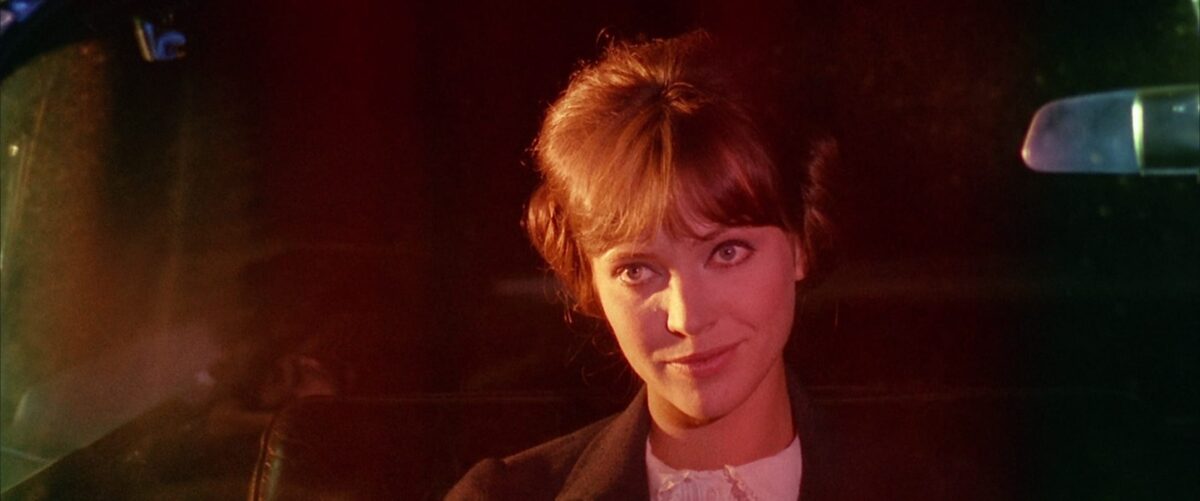
In the same scene, Ferdinand and Marianne take out the gas station attendants in true “love on the run,” Bonnie-and-Clyde style. At one point, Marianne tells Ferdinand she knows a trick from Laurel and Hardy, a simple bait-and-switch straight from slapstick comedy. Next, Ferdinand engages an attendant in a cartoonish boxing match: the two stone-faced men put up their dukes, round each other and take turns swinging. Both these instances embody the cultural language of cinema, whereby the characters enact a parody of classic cinema. The scene takes on a deeper meaning when we realize the stakes are not what we would think (as the base narrative would have us believe), but center instead on the exploration of the processes of thought formed by years of media exposure. Society, Godard, and the characters think in pop-cultural appropriations. The matter of mind is a collective absorption of mass media.
Thus, in Pierrot, Godard shows us much more than an adventure film or a love story. As is evidenced in Ferdinand and Marianne’s narration, driving off from the Total gas station, atop images of comic books and paintings:
Ferdinand: Sum total.
Marianne: It was an adventure film.
Ferdinand: The Crown of Blood.
Marianne: Sum total.
Ferdinand: Tender is the Night.
Marianne: It was a love story.
They try to find a sum total of the film, a genre to encapsulate the story, examples of films or novels to reflect the narrative’s unfolding. But the film isn’t about this base narrative. The narratives are inherent in the form itself, which reflects the new language of thought, molded and shaped by the mass media surrounding itself. The characters seek genre through a lens of genre, utilizing form that reflects thought that in itself reflects the media that it itself is a part of. Godard, rather than battling with futility against the omniscience of mass culture and media, embraces it and reconfigures it as a new form, one in which that form, a cacophony of allusions and references to centuries of media, becomes the new narrative.
Purchase Pierrot Le Fou on Blu-ray or DVD from Amazon
Stream Pierrot Le Fou on Amazon Prime
Stay up to date with all things Split Tooth Media and follow Michael on Twitter
(Split Tooth may earn a commission from purchases made through affiliate links on our site.)

